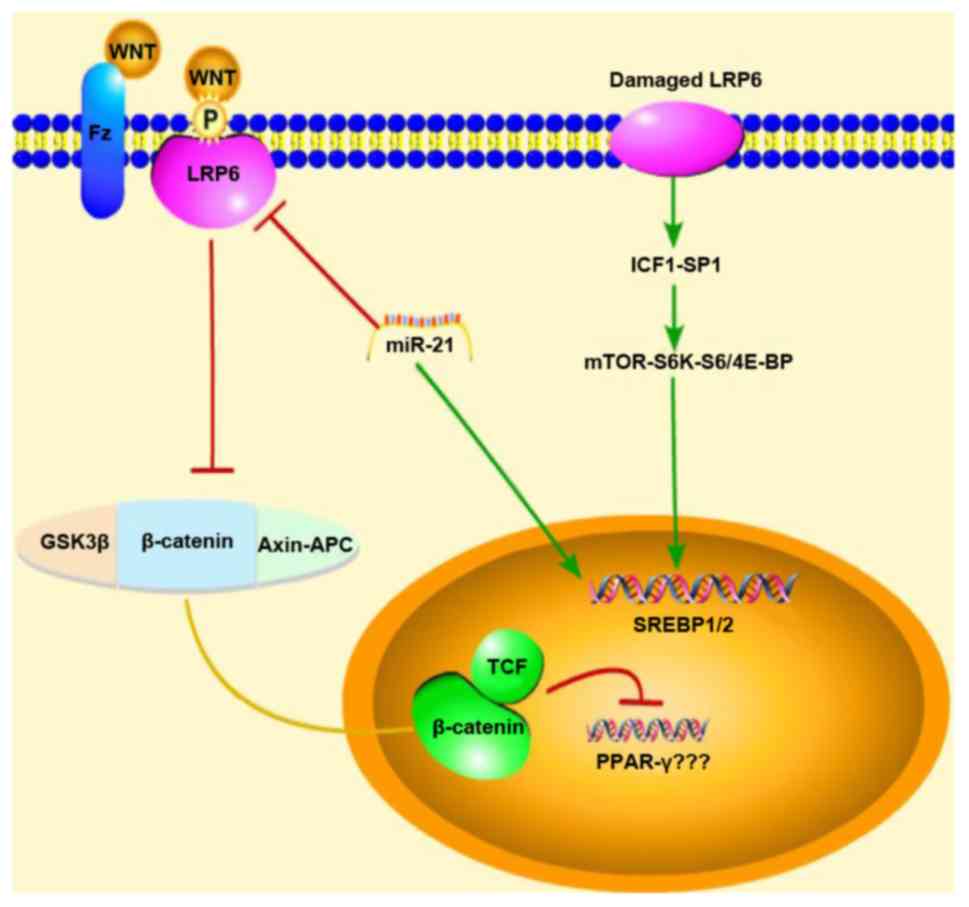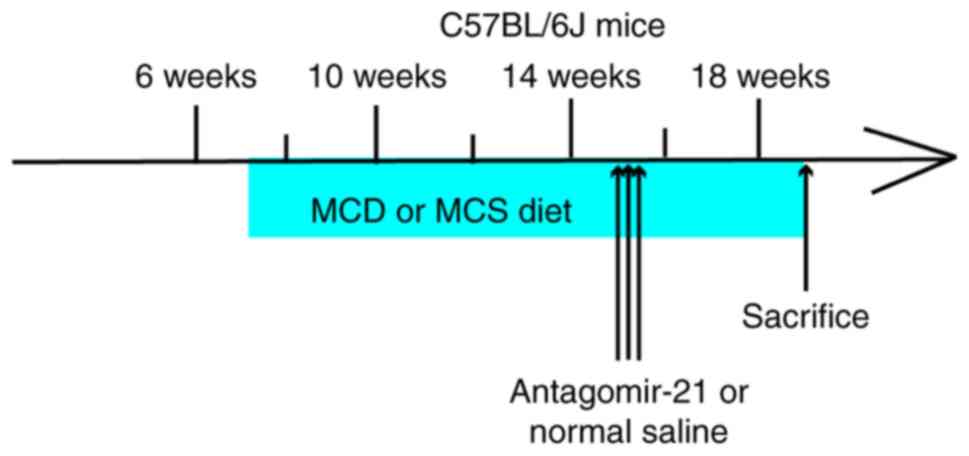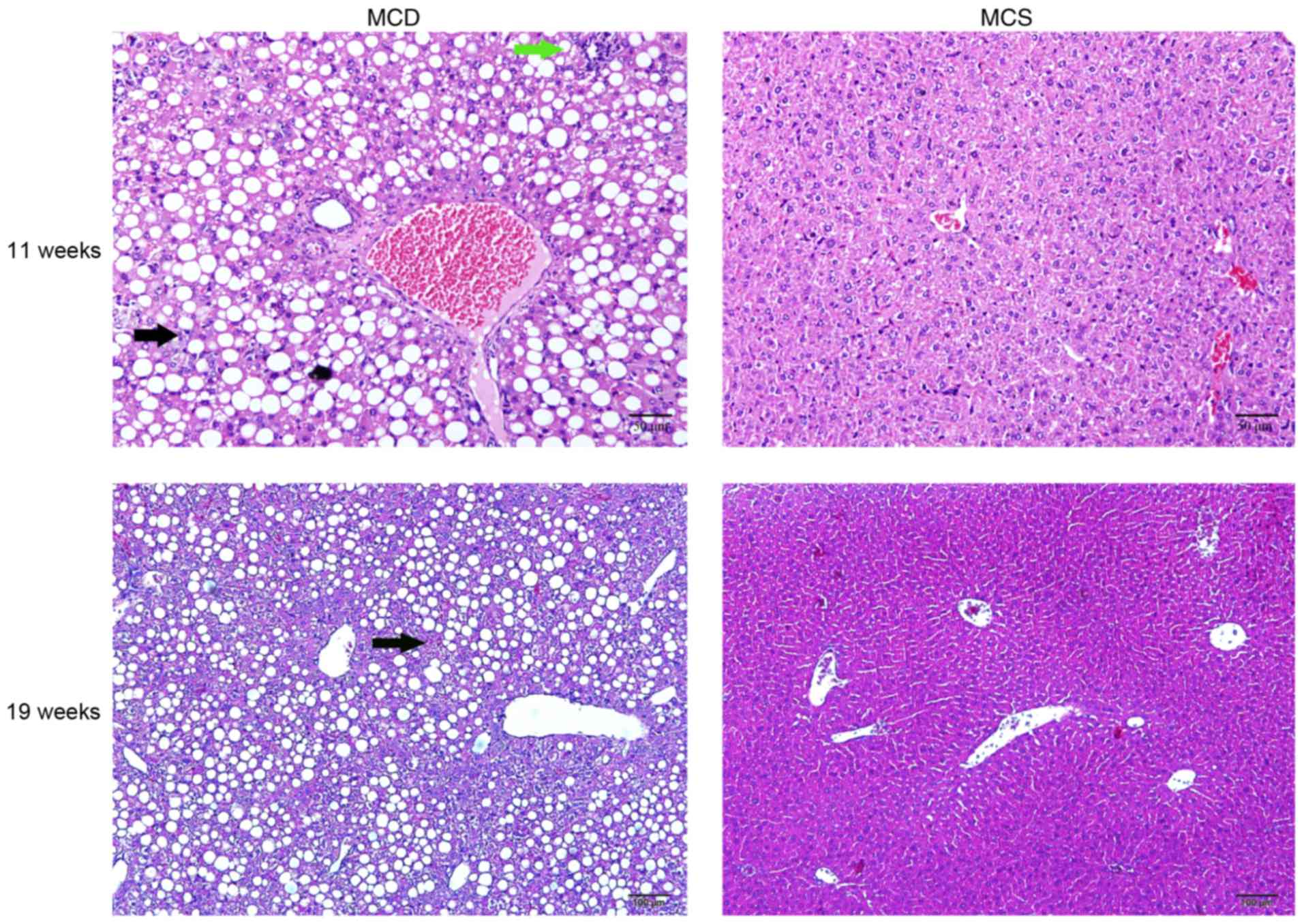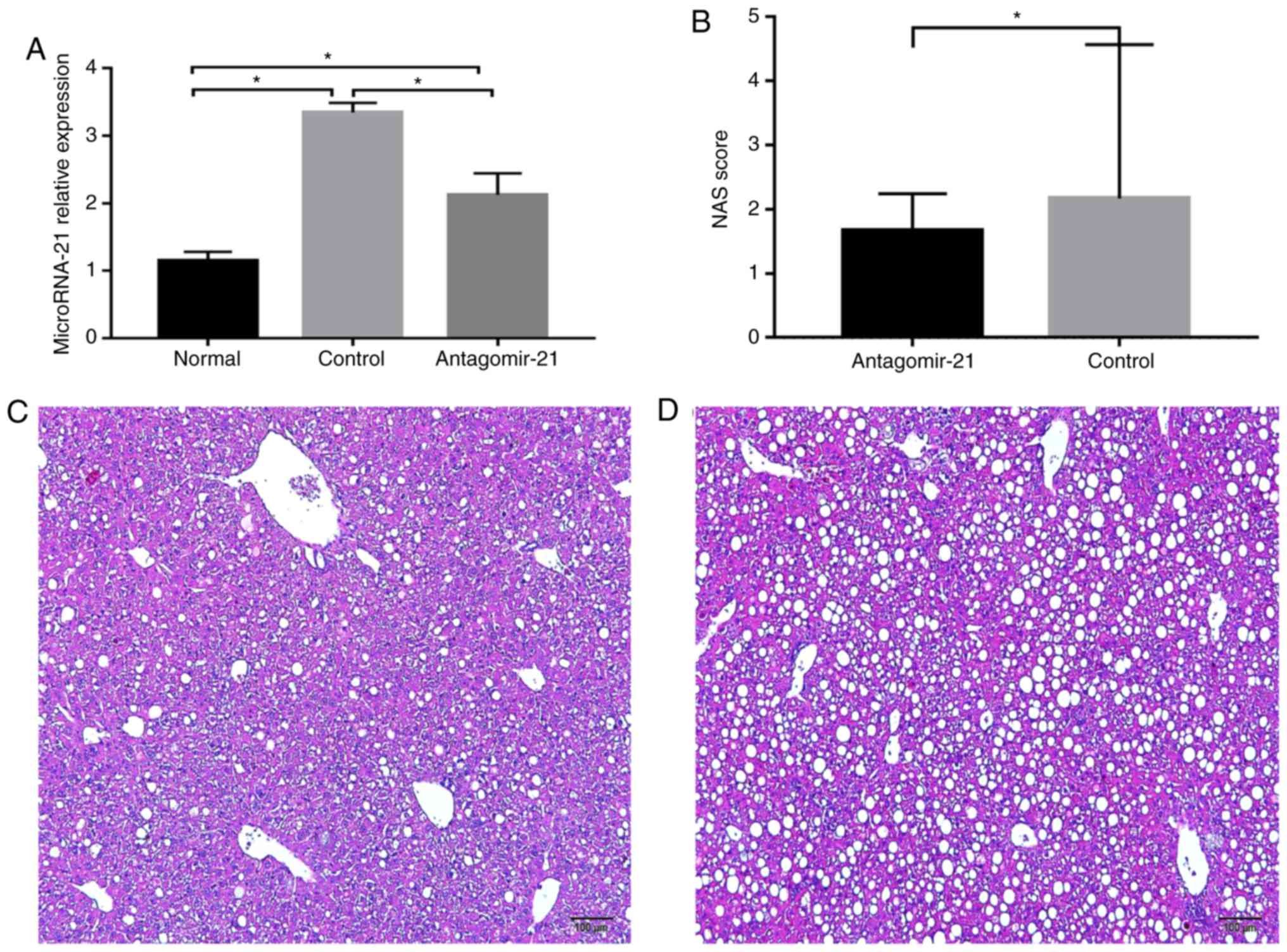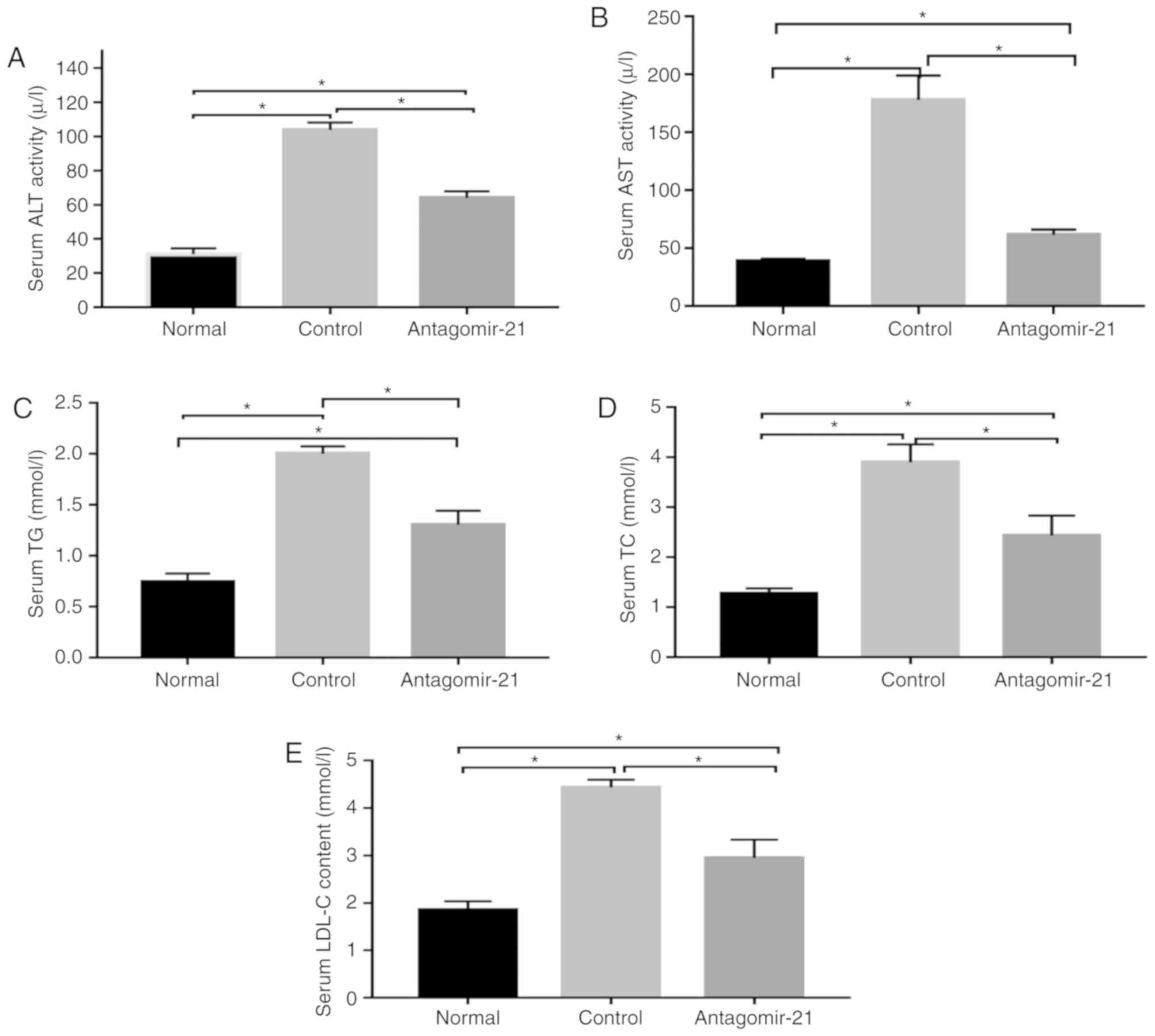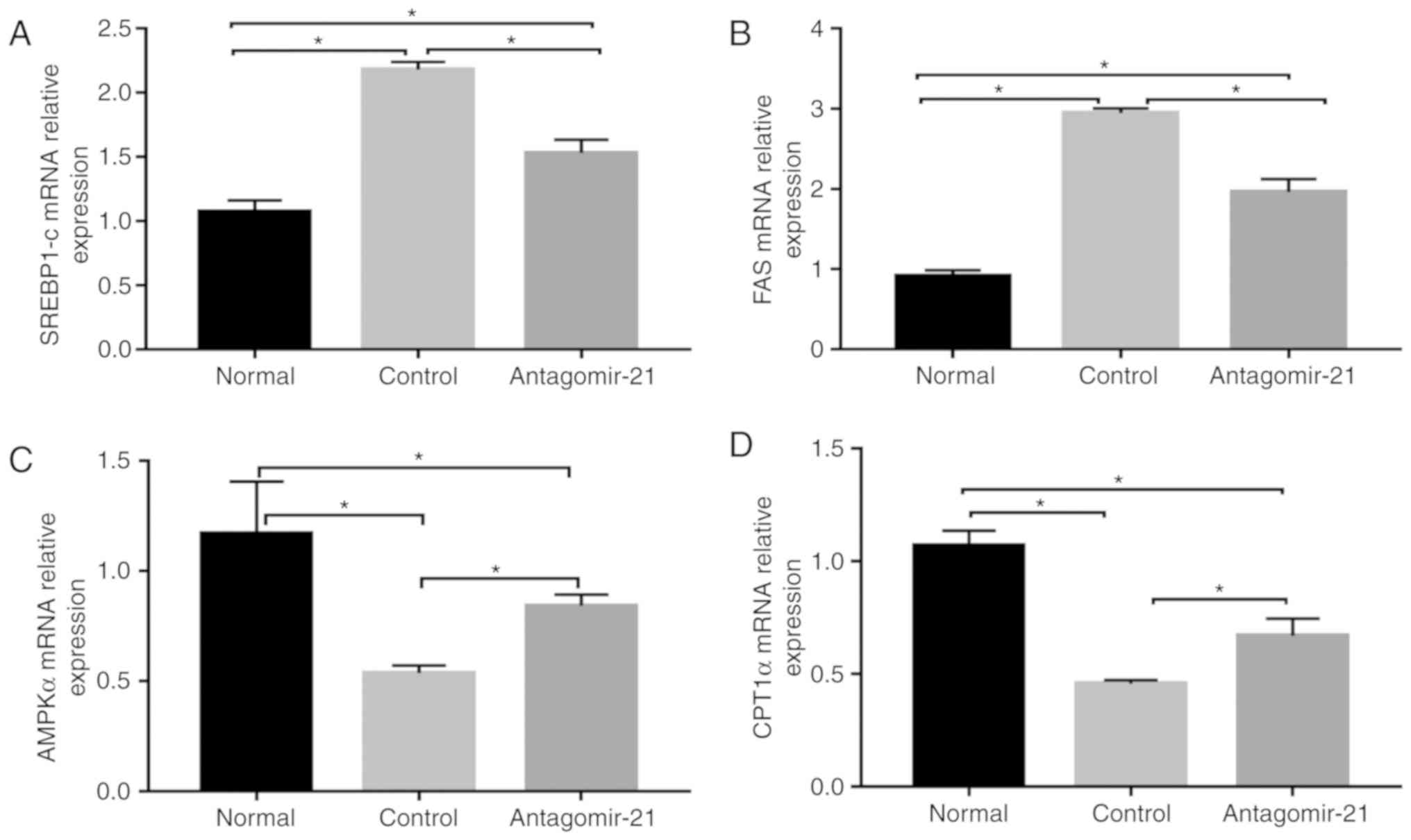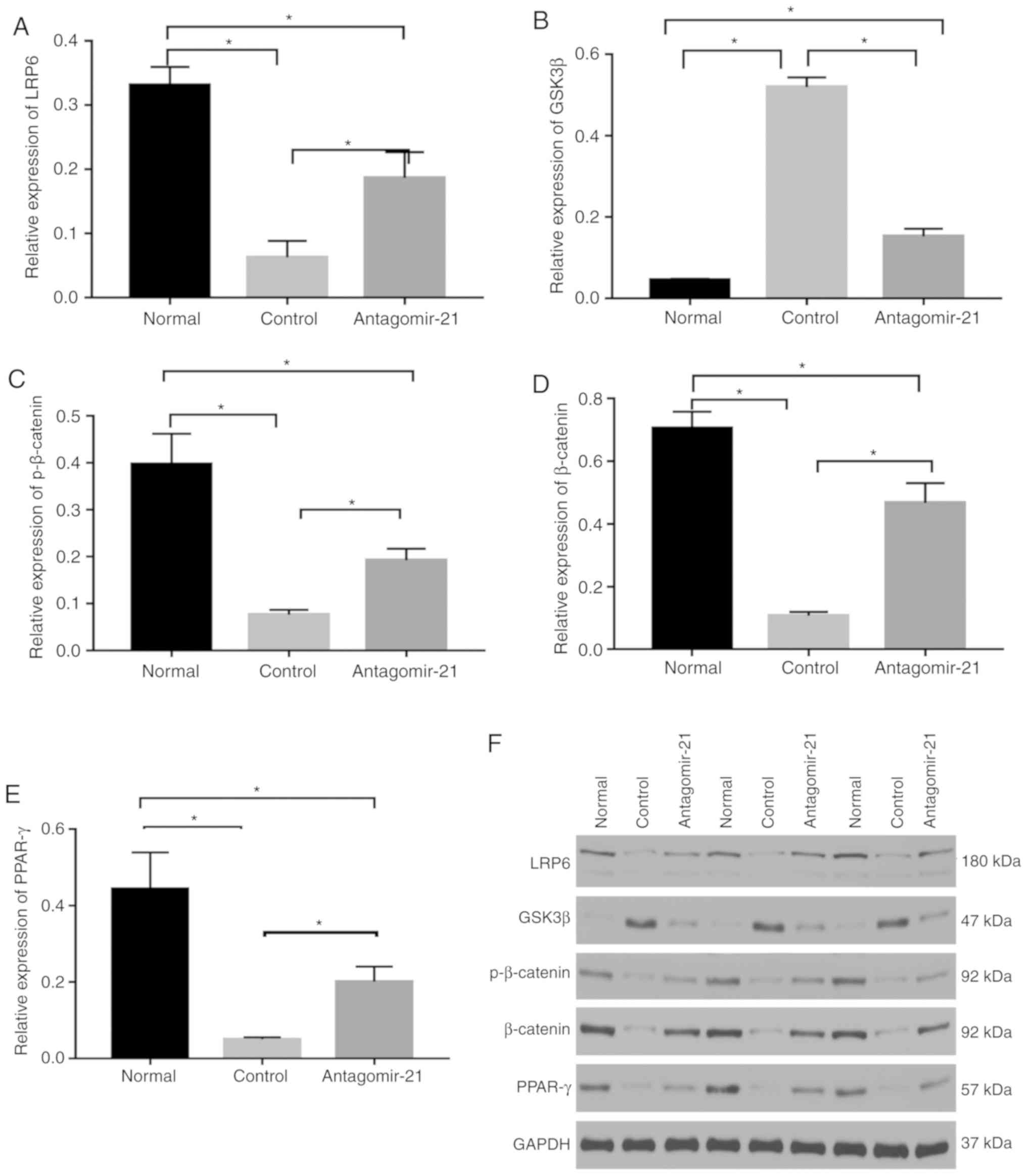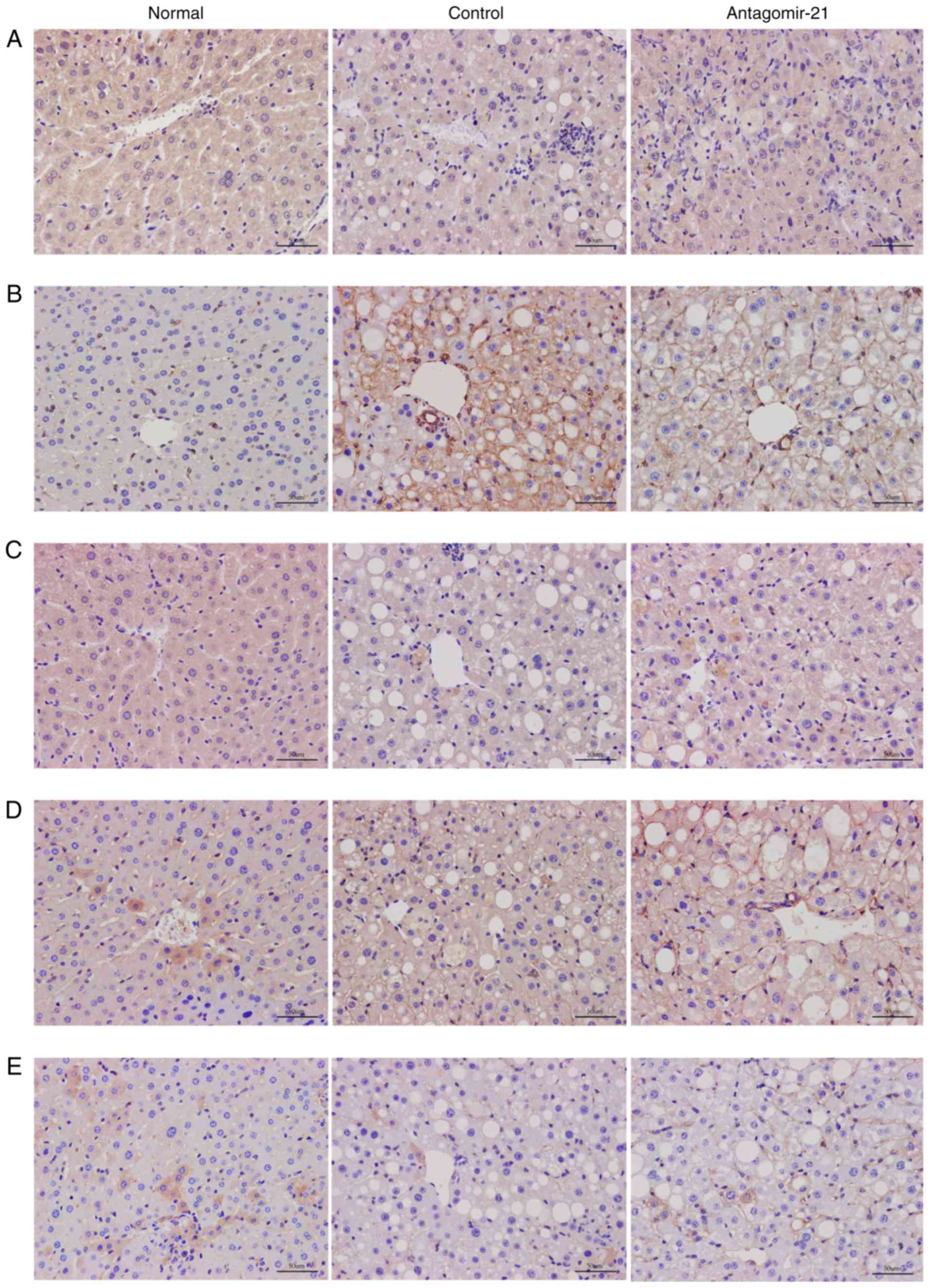|
1
|
Hardy T, Oakley F, Anstee QM and Day CP:
Nonalcoholic fatty liver disease: Pathogenesis and disease
spectrum. Annu Rev Pathol. 11:451–496. 2016. View Article : Google Scholar : PubMed/NCBI
|
|
2
|
Cai J, Zhang XJ and Li H: Progress and
challenges in the prevention and control of nonalcoholic fatty
liver disease. Med Res Rev. 39:328–348. 2019. View Article : Google Scholar
|
|
3
|
Fiorucci S, Biagioli M and Distrutti E:
Future trends in the treatment of non-alcoholic steatohepatitis.
Pharmacol Res. 134:289–298. 2018. View Article : Google Scholar : PubMed/NCBI
|
|
4
|
Ackers I and Malgor R: Interrelationship
of canonical and non-canonical Wnt signalling pathways in chronic
metabolic diseases. Diab Vasc Dis Res. 15:3–13. 2018. View Article : Google Scholar :
|
|
5
|
Green CJ, Parry SA, Gunn PJ, Ceresa CDL,
Rosqvist F, Piché ME and Hodson L: Studying non-alcoholic fatty
liver disease: The ins and outs of in vivo, ex vivo and in vitro
human models. Horm Mol Biol Clin Investig Aug. 11:2018.Epub ahead
of print.
|
|
6
|
Go GW: Low-density lipoprotein
receptor-related protein 6 (LRP6) is a novel nutritional
therapeutic target for hyperlip-idemia, non-alcoholic fatty liver
disease, and atherosclerosis. Nutrients. 7:4453–4464. 2015.
View Article : Google Scholar : PubMed/NCBI
|
|
7
|
Wang S, Song K, Srivastava R, Dong C, Go
GW, Li N, Iwakiri Y and Mani A: Nonalcoholic fatty liver disease
induced by noncanonical Wnt and its rescue by Wnt3a. FASEB J.
29:3436–3445. 2015. View Article : Google Scholar : PubMed/NCBI
|
|
8
|
Ahn J, Lee H, Jung CH and Ha T: Lycopene
inhibits hepatic steatosis via microRNA-21-induced downregulation
of fatty acid-binding protein 7 in mice fed a high-fat diet. Mol
Nutr Food Res. 56:1665–1674. 2012. View Article : Google Scholar : PubMed/NCBI
|
|
9
|
Sun C, Huang F, Liu X, Xiao X, Yang M, Hu
G, Liu H and Liao L: miR-21 regulates triglyceride and cholesterol
metabolism in non-alcoholic fatty liver disease by targeting HMGCR.
Int J Mol Med. 35:847–853. 2015. View Article : Google Scholar : PubMed/NCBI
|
|
10
|
Loyer X, Paradis V, Hénique C, Vion AC,
Colnot N, Guerin CL, Devue C, On S, Scetbun J, Romain M, et al:
Liver microRNA-21 is overexpressed in non-alcoholic steatohepatitis
and contributes to the disease in experimental models by inhibiting
PPARα expression. Gut. 65:1882–1894. 2016. View Article : Google Scholar
|
|
11
|
Dattaroy D, Pourhoseini S, Das S, Alhasson
F, Seth RK, Nagarkatti M, Michelotti GA, Diehl AM and Chatterjee S:
Micro-RNA 21 inhibition of SMAD7 enhances fibrogenesis via
leptin-mediated NADPH oxidase in experimental and human
nonalcoholic steatohepatitis. Am J Physiol Gastrointest Liver
Physiol. 308:G298–G312. 2015. View Article : Google Scholar :
|
|
12
|
Wei J, Feng L, Li Z, Xu G and Fan X:
MicroRNA-21 activates hepatic stellate cells via PTEN/Akt
signaling. Biomed Pharmacother. 67:387–392. 2013. View Article : Google Scholar : PubMed/NCBI
|
|
13
|
Wu H, Ng R, Chen X, Steer CJ and Song G:
MicroRNA-21 is a potential link between non-alcoholic fatty liver
disease and hepa-tocellular carcinoma via modulation of the
HBP1-p53-Srebp1c pathway. Gut. 65:1850–1860. 2016. View Article : Google Scholar
|
|
14
|
Li CP, Li HJ, Nie J, Chen X and Zhou X:
Mutation of miR-21 targets endogenous lipoprotein receptor-related
protein 6 and nonalcoholic fatty liver disease. Am J Transl Res.
9:715–721. 2017.PubMed/NCBI
|
|
15
|
Kleiner DE, Brunt EM, Van Natta M, Behling
C, Contos MJ, Cummings OW, Ferrell LD, Liu YC, Torbenson MS,
Unalp-Arida A, et al: Design and validation of a histological
scoring system for nonalcoholic fatty liver disease. Hepatology.
41:1313–1321. 2005. View Article : Google Scholar : PubMed/NCBI
|
|
16
|
Livak KJ and Schmittgen TD: Analysis of
relative gene expression data using real-time quantitative PCR and
the 2(-Delta Delta C(T)) method. Methods. 25:402–408. 2001.
View Article : Google Scholar
|
|
17
|
Kong M, Chen X, Xu H, Wenping, Fang M and
Xu Y: Hepatocyte-specific deletion of Brg1 alleviates
methionine-and-choline-deficient diet (MCD) induced non-alcoholic
steatohepatitis in mice. Biochem Biophys Res Commun. 503:344–351.
2018. View Article : Google Scholar : PubMed/NCBI
|
|
18
|
Zhao XY and Shao K: Roles of microRNA-21
in the pathogenesis of insulin resistance and diabetic
mellitus-induced non-alcoholic fatty liver disease. Zhongguo Yi Xue
Ke Xue Yuan Xue Bao. 38:144–149. 2016.In Chinese. PubMed/NCBI
|
|
19
|
Yamada H, Suzuki K, Ichino N, Ando Y,
Sawada A, Osakabe K, Sugimoto K, Ohashi K, Teradaira R, Inoue T, et
al: Associations between circulating microRNAs (miR-21, miR-34a,
miR-122 and miR-451) and non-alcoholic fatty liver. Clin Chim Acta.
424:99–103. 2013. View Article : Google Scholar : PubMed/NCBI
|
|
20
|
Becker PP, Rau M, Schmitt J, Malsch C,
Hammer C, Bantel H, Müllhaupt B and Geier A: Performance of serum
microRNAs -122, -192 and -21 as biomarkers in patients with
non-alcoholic steatohepatitis. PLoS One. 10:e01426612015.
View Article : Google Scholar : PubMed/NCBI
|
|
21
|
Rodrigues PM, Afonso MB, Simão AL,
Carvalho CC, Trindade A, Duarte A, Borralho PM, Machado MV,
Cortez-Pinto H, Rodrigues CM and Castro RE: miR-21 ablation and
obeticholic acid ameliorate nonalcoholic steatohepatitis in mice.
Cell Death Dis. 8:e27482017. View Article : Google Scholar : PubMed/NCBI
|
|
22
|
Wu K, Ye C, Lin L, Chu Y, Ji M, Dai W,
Zeng X and Lin Y: Inhibiting miR-21 attenuates experimental hepatic
fibrosis by suppressing both the ERK1 pathway in HSC and hepatocyte
EMT. Clin Sci (Lond). 130:1469–1480. 2016. View Article : Google Scholar
|
|
23
|
Caviglia JM, Yan J, Jang MK, Gwak GY, Affo
S, Yu L, Olinga P, Friedman RA, Chen X and Schwabe RF: MicroRNA-21
and Dicer are dispensable for hepatic stellate cell activation and
the development of liver fibrosis. Hepatology. 67:2414–2429. 2018.
View Article : Google Scholar :
|
|
24
|
Montazeri-Najafabady N, Dabbaghmanesh MH
and Mohammadian Amiri R: The association of LRP6 rs2302685 (V1062I)
polymorphism with the risk of hyperlipidemia in Iranian children
and adolescents. Ann Hum Genet. 82:382–388. 2018. View Article : Google Scholar : PubMed/NCBI
|
|
25
|
Go GW, Srivastava R, Hernandez-Ono A, Gang
G, Smith SB, Booth CJ, Ginsberg HN and Mani A: The combined
hyperlip-idemia caused by impaired Wnt-LRP6 signaling is reversed
by Wnt3a rescue. Cell Metab. 19:209–220. 2014. View Article : Google Scholar : PubMed/NCBI
|
|
26
|
Silva AKS and Peixoto CA: Role of
peroxisome proliferator-activated receptors in non-alcoholic fatty
liver disease inflammation. Cell Mol Life Sci. 75:2951–2961. 2018.
View Article : Google Scholar : PubMed/NCBI
|















